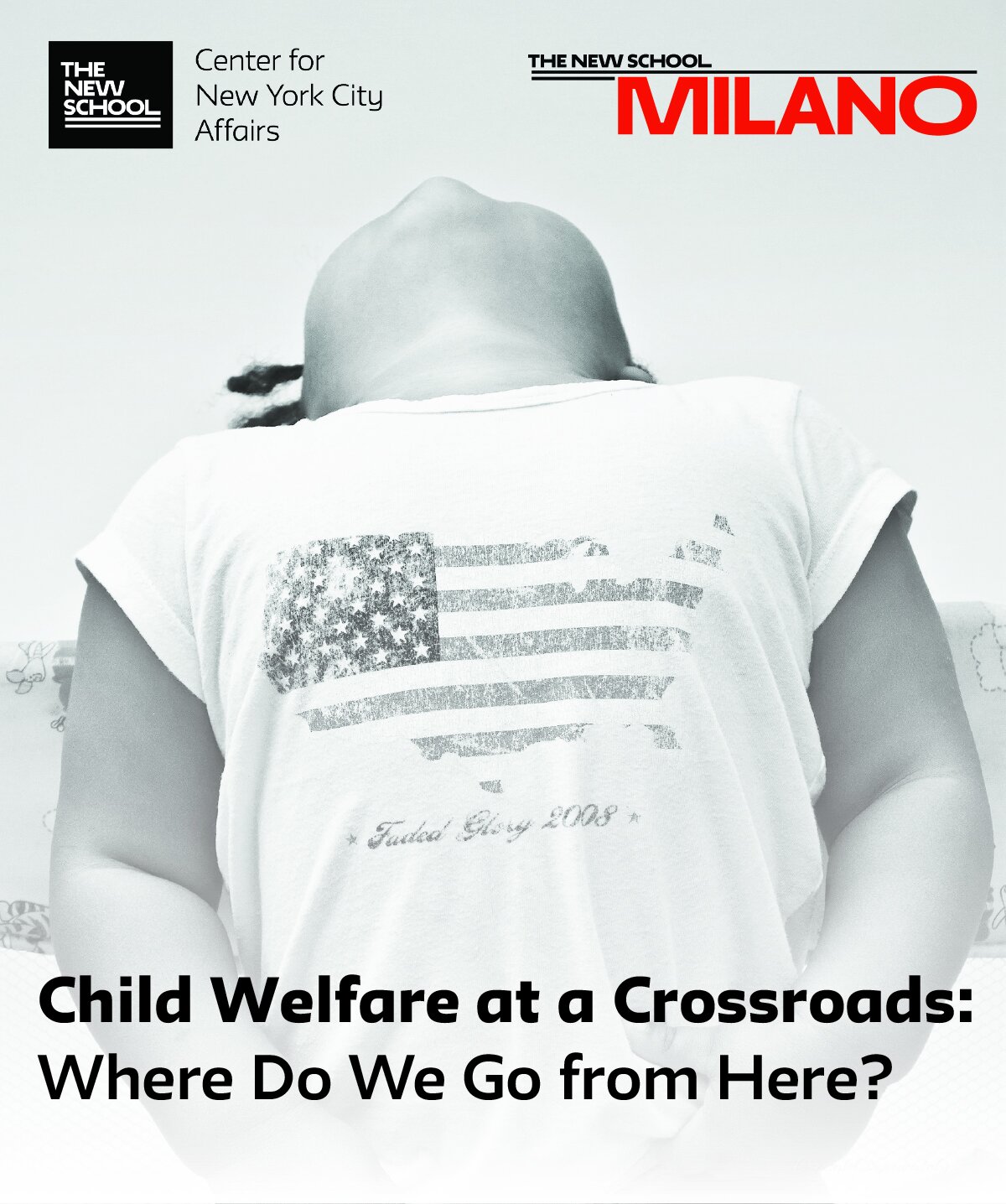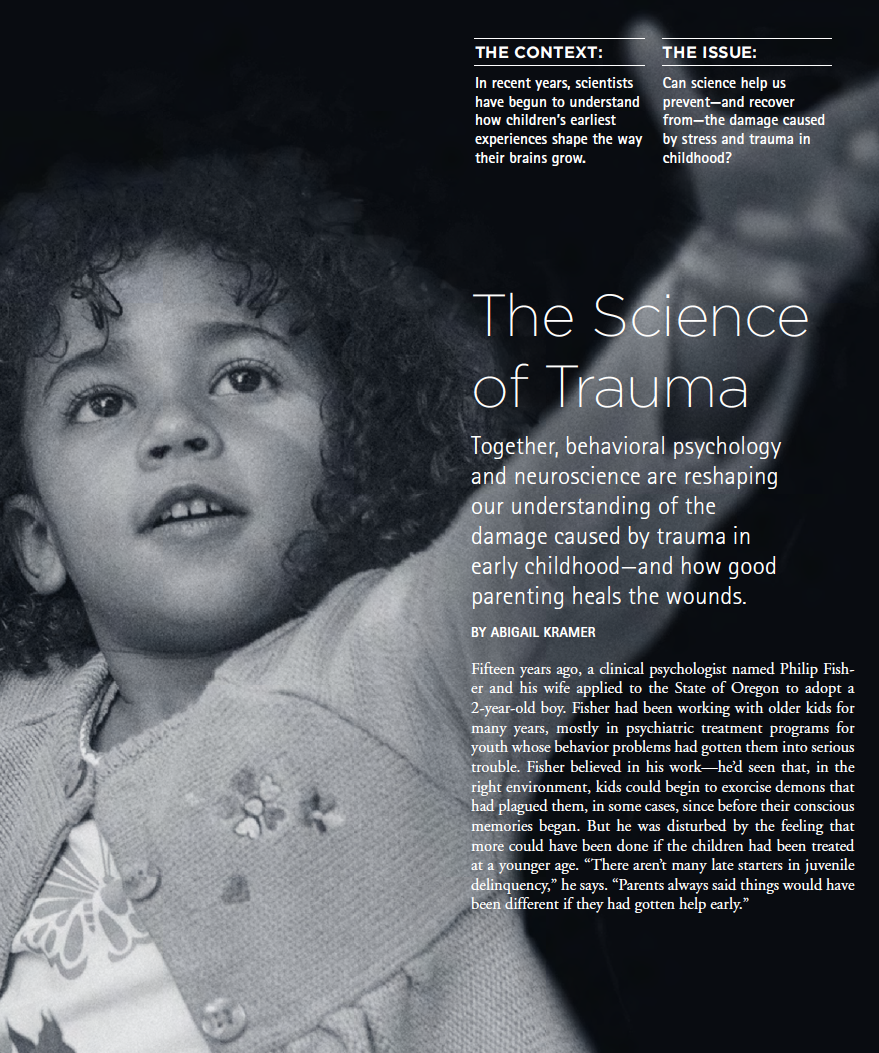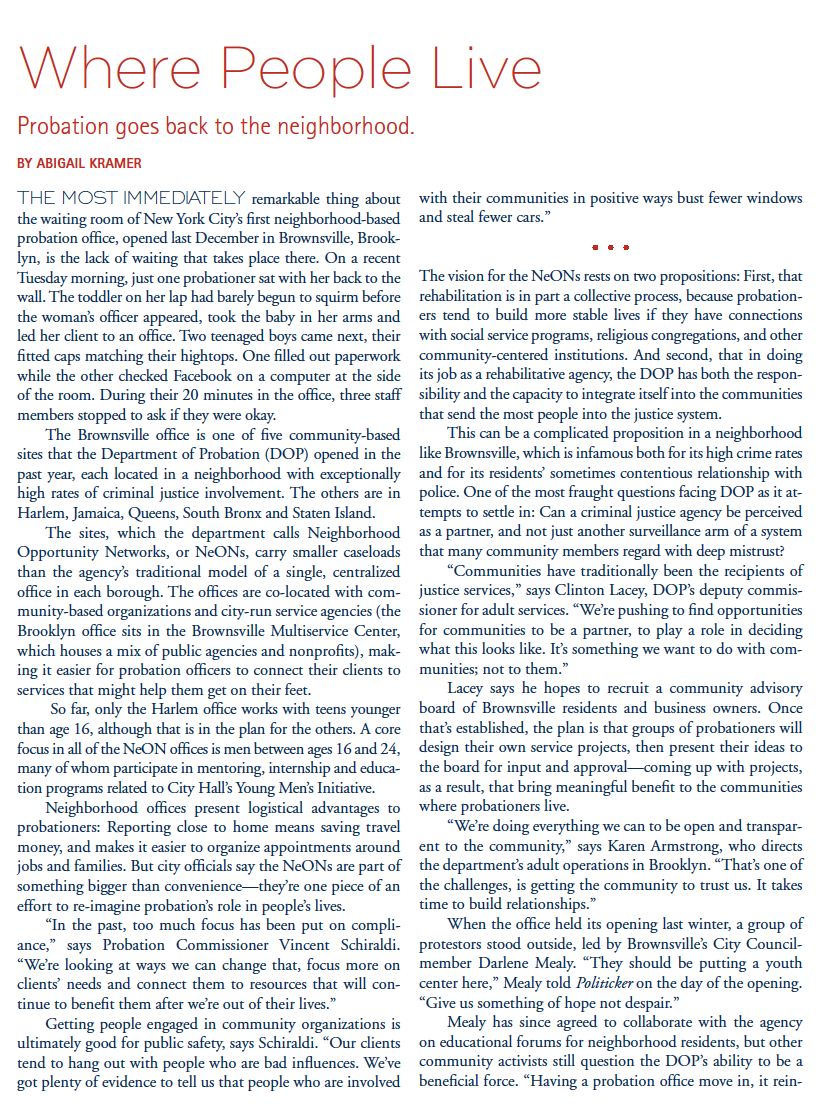By Abigail Kramer
Across New York State, children and adolescents wait weeks—or even months—to get treatment for serious mental health problems. In the coming year, mental health providers and advocates warn that the situation may get worse. Despite an increase in teen suicide attempts, State officials plan to cut payments for several mental health programs that serve young people in their homes and communities.
The programs, which rolled out at the beginning of 2019, were supposed to serve over 200,000 young people on the State’s Medicaid program with mental health or substance abuse problems. A year after their launch, however, services are reaching a tiny fraction of the kids who need them.
DATA & STATISTICS | CHILD WELFARE WATCH
Watching the Numbers (2019)
A six-year statistical survey monitoring New York City's child welfare system
CLICK HERE FOR FULL SURVEY
DATA & STATISTICS | CHILD WELFARE WATCH
Watching the Numbers (2018)
A six-year statistical survey monitoring New York City's child welfare system
CLICK HERE FOR FULL SURVEY
brief
Banned For 28 Years: How Child Welfare Accusations Keep Women Out Of The Workforce
By Abigail Kramer
Francine Almash was not especially surprised when an investigator from New York City’s child welfare agency showed up at her door. A few months earlier, her then-10-year-old son, Shawn, who is autistic, had been pinned to a wall by a crisis counselor in his special education classroom and come home with a broken thumb. Almash refused to send him back, and so the school called the State’s child abuse hotline to report her for neglecting Shawn’s education.
Report
Why Washington Matters: Federal Spending Is Crucial To New York Children And Families
By Angela Butel and James Parrott
The federal government provides significant funding to localities, including New York City, which is targeted primarily to support children, families, and low-income communities. This support happens through a combination of direct benefits for individuals and families – social safety net programs such as Medicare, Social Security, Medicaid, and the Supplemental Nutrition Assistance Program (SNAP) – and social services categorical funding, which flows through the City budget to help provide services to individuals and families. Some federal funding streams, such as Temporary Assistance to Needy Families (TANF), provide both kinds of funding – direct benefits to families as well as programmatic funding to states and localities.
Data & Statistics | Child Welfare Watch
Watching the Numbers (2017)
Our six years of key indicators spotlight trends in New York City’s foster care and preventive services systems.
Report
Free Preschool, Coming To An Apartment Near You: What Family Child Care Could Mean For 3K
By Kendra Hurley with Angela Butel
When New York City Mayor Bill de Blasio ran for re-election in 2017 on the ambitious promise of offering free preschool to the city’s 3-year-olds, classes in living rooms were most likely not what he or voters had in mind. But last month, just over a year into 3K’s multi-year rollout, the City Department of Education (DOE) revealed its intention to bring 3K into the more loosely regulated world of home-based child care settings.
Urban Matters
Making Family Child Care Work For 3K
By Kendra Hurley
Mayor Bill de Blasio campaigned for re-election in 2017 on a promise of instituting “3K-for-All” – a logical extension of the popular citywide launch of universal pre-kindergarten (UPK) for 4-year-olds during his first term. At the time, neither he nor the voters may have envisioned parents dropping their 3-year-olds off for preschool at private homes and apartments. But 3K home-based daycares are now part of the City’s plan for the fall of 2020, according to a white paper on early childhood education released by the Department of Education (DOE) last week.
Urban Matters
The City Shares Its New Early Childhood Education Vision
By Kendra Hurley
On Monday, the Department of Education (DOE) released its long-anticipated white paper on the future of early education in New York City. It describes how the City envisions its merger of the City-contracted subsidized child care system, now overseen by the Administration for Children’s Services, with Pre-K-for-All and 3K-for-All under the aegis of the DOE.
Report
Long Hours, High Caseloads: An Ongoing Surge Of Cases Weighs On Child Welfare Workers
By Abigail Kramer
In the poorest neighborhoods of New York City, frontline child welfare workers frequently carry caseloads far above recommended levels, according to data from the Administration for Children’s Services (ACS), which runs the City's child welfare system.
In order to keep children safe, national child welfare experts recommend that child protective caseworkers, who investigate possible cases of abuse and neglect, carry loads of no more than 12 to 14 families at a time. In many parts of the city, ACS succeeds in keeping caseloads well below that range: In Queens, for example, the average caseload was under eight families per worker in September. The citywide average was 10.1.
Building Health Homes for Kids: New York’s Reforms for Children on Medicaid Finally Take Shape
By Abigail Kramer
New York has begun its ambitious project to re-engineer health care for low-income children. In a new report, Building Health Homes for Kids: New York’s Reforms for Children on Medicaid Finally Take Shape, the Center for New York City Affairs looks at the opportunities and challenges presented by the State’s first major step toward reform.
Keeping Teenagers out of Foster Care: Do Teen-Specialized Services Make a Difference?
By Abigail Kramer
In 2013, New York City launched an array of programs designed to keep teenagers out of the City’s foster care system.
The programs—known collectively as “teen-specialized preventive services”—represent a pivotal piece of the City’s ongoing child welfare reform agenda: to keep whittling down the number of kids who enter foster care by providing intensive, evidence-based therapy to families in crisis.
What's Needed for '3-K for All' and Child Care Centers to Work and Play Well Together?
By Kendra Hurley
IN LATE APRIL Mayor Bill de Blasio announced two new plans that could determine the future of the country’s largest child care system for poor and low-income families.
Will the new plans further disrupt a child care system still reeling from challenges that arose from pre-K expansion, including a roughly 20 percent decline in enrollment of 4-year-olds since the expansion? Or might they, present a key opportunity for the DOE to identify and address those challenges?
Brief | Child Welfare
ACS IN OVERDRIVE: Since the Death of a Harlem 6-Year-Old, Are Fewer Families Getting the Help They Need?
After a series of widely publicized child deaths in 2016, New York City's child welfare system continues to struggle under a glut of new cases.
In response to a surge in child abuse and neglect reports, the Administration for Children’s Services (ACS) has drastically increased the number of families it brings into the system, filing more cases in Family Court and placing more children in foster care.
Caseloads among the workers responsible for investigating and monitoring families are significantly up. Family Court is overwhelmed, exacerbating its chronic problems of delayed and cancelled hearings. And lawyers for ACS-involved parents say that families are sitting on waitlists—sometimes for weeks—for preventive service programs designed to help stabilize and supervise kids' safety at home.
Data | Child Welfare
A six-year statistical survey monitoring New York City's child welfare system (2016)
CLICK HERE FOR FULL SURVEY
Urban Matters | Child Welfare
Why Child Protective Investigations Can Make Parents Fearful and Put Kids at Risk (2016)
By Jeanette Vega
In many big cities the number of children entering foster care has dropped dramatically while the number of families receiving support services has grown. But across the country, just as many families continue to be the subject of child protective investigations; across the country, more than three million children are the subjects of such investigations each year.
READ MORE
Urban Matters | Child Welfare
How 'Growing Up NYC' Aims to Improve the Lives of Children (2016)
By Richard Buery
New York City is home to almost three million children, youth, and young adults under the age of 24. The City is committed to helping each of those young people thrive at each stage of their childhood and grow up to become healthy and happy adults. To help us get there, the City’s Children’s Cabinet has launched Growing Up NYC: a unified vision for promoting the well-being of children and young adults.
READ MORE
Report | Child Welfare
Executive Summary
Bringing It All Home: Problems and Possibilities Facing NYC's Family Child Care (2016)
By Kendra Hurley with Janie Ziye Shen
In 2012, NYC launched one of the country's largest experiments in raising the quality of subsidized family child care. More than three years since the launch of EarlyLearnNYC, we investigated what has worked and what has not.
READ | DOWNLOAD
Report | Child Welfare
Report | Child Welfare, Child Care
Baby & Toddler Takeoff (2015)
By Kendra Hurley, Abigail Kramer and Bruce Cory with Evan Pellegrino and Gail Robinson
With nearly 15 million new dollars earmarked in the 2016 city budget for the social and emotional health of the youngest New Yorkers, the city's growing interest in what's often called "infant mental health" is undeniable. This report offers the first comprehensive look at New York's key new goals and efforts to protect the well-being of babies and toddlers.
READ | DOWNLOAD
Report | Child Welfare, Homelessness
In Need of Shelter: Protecting the city’s youngest children from the traumas of homelessness (2015)
By Kendra Hurley and Abigail Kramer
This Child Welfare Watch report describes the stresses that homelessness puts on families with young children, and explores the discontinuity between the large number of young children in the shelter system and the dearth of services available to them.
READ | DOWNLOAD
Story | Child Welfare, Juvenile Justice
Closing in on 'Close to Home':
NYC to Open New Juvenile Justice Homes (2015)
After more than two years of delays and postponements, New York City officials say they will move forward this month with a long-promised reform of the biggest municipal juvenile justice system in the nation.
READ MORE
Data | Child Welfare
A six-year statistical survey monitoring New York City's child welfare system (2015)
CLICK HERE FOR FULL SURVEY
Baby Steps: Poverty, chronic stress, and NY’s youngest children (2014)
By Andrew White, Kendra Hurley, and Abigail Kramer
We look at the science of early childhood development—and we illuminate how supportive, nurturing caregivers can buffer children from the negative impacts of early adversity, including the ambient stress that so often accompanies intractable poverty.
The Science of Trauma (2014)
By Abigail Kramer
Together, behavioral psychology and neuroscience are reshaping our understanding of the damage caused by trauma in early childhood.
Learning How Babies’ Brains Grow (2014)
By Abigail Kramer
A new program teaches biological and foster parent the science of development.
Brushes With The Law:
Young New Yorkers and the Criminal Justice System (2013)
By Andrew White, Kendra Hurley, and Abigail Kramer
In the final year under the administration of Mayor Bloomberg, who has made juvenile justice one of the signature issues of his time in office, we consider the progress of reforms and the places where they’ve been stymied. And we look at the impact on communities that have long been destabilized by cycles of crime, police scrutiny, arrest and incarceration.
Where People Live: Probation Goes Back to the Neighborhood (2013)
By Abigail Kramer
Probation goes back to the neighborhood.
To Protect and Serve? Public Housing Residents Experience Both Crime and Police Surveillance at Rates Far Higher Than Most of the City (2013)
By Abigail Kramer
Public housing residents experience both crime and police surveillance at rates far above the rest of the city. Can trust between cops and residents be restored?
One Step Back: The Delayed Dream of Community Partnerships (2012)
By Andrew White, Kendra Hurley, and Abigail Kramer
This edition looks at the progress of the city’s community partnerships, at their accomplishments as well as their very real limitations, and at the vision they still represent for a child welfare system that answers to the communities it’s designed to serve.
In Transition: A better future for youth leaving foster care (2011)
By Andrew White, Clara Hemphill, Kendra Hurley, and Abigail Kramer
This special double edition of Child Welfare Watch reports that homelessness and severe economic hardship are widespread for young people aging out of New York City foster care.
Aging Out of Foster Care With Babies of Their Own (2011)
By Abigail Kramer
When young women leave foster care with babies of their own, they face a tough city and even tougher odds: young, nearly always single, and—often—very much alone in the world.
Looking for Work: Aging Out Into a Recession (2011)
By Abigail Kramer
At the best of times, aging out of the child welfare system can be like walking off a plank. In a recession, many young people sink.
A Need for Correction:
Reforming New York's Juvenile Justice System (2009)
By Andrew White, Clara Hemphill, and Kendra Hurley
In the wake of a federal Department of Justice investigation that found widespread use of excessive force by staff at four OCFS facilities upstate, this new report identifies shortcomings in mental health services and explores possible solutions, including the expansion of alternatives to incarceration for juvenile delinquents.
DOWNLOAD
Hard Choices: Caring for the children of mentally ill parents (2009)
By Andrew White, Clara Hemphill, Kendra Hurley, Ann Farmer, and Maia Szalavitz
A joint report with the Center for an Urban Future documenting the issues facing poor and working class parents with mental illness and their children.
Homes Away From Home: Foster Parents For A New Generation (2008)
By Andrew White, Kendra Hurley, Barbara Solow, Ann Farmer, Laura Longhine, and Helaine Olen
This issue documents how foster parents are adjusting to their increasingly demanding role, and how the system is struggling to meet their needs—as well as those of the children in their care, which may include anything from mental health care to prenatal care and parenting programs for pregnant teens.
Against the Clock: The Struggle to Move Kids into Permanent Homes (2008)
By Andrew White, Kendra Hurley, Barbara Solow, Kathleen Carroll, Keach Hagey, Kim Nauer, Joan Oleck, Helaine Olen
This issue explores the challenges of moving the city’s foster children into safe, permanent homes quickly, a decade after federal laws sought to improve foster care systems nationwide.
Pressures and Possibilities:
Supporting Families and Children at Home (2007)
By Andrew White, Kendra Hurley, Barbara Solow, Eve Heyn, Nora McCarthy
This issue published jointly with the Center for an Urban Future, explores the transformation of the city’s network of nonprofit family support agencies as they become increasingly central to the Bloomberg administration’s strategy for protecting children from abuse and neglect.
Half Full, Half Empty: Children and Families with Special Needs (2007)
This issue of describes the impact of a longstanding dispute that has left children and families without the respite care, in-home assistance and other family supports that can help make it possible for young people with disabilities to live healthy and more fulfilling lives.
The Innovation Issue: New Initiatives in New York Child Welfare (2005)
This issue of Child Welfare Watch highlights some of the new initiatives that are improving parental visits for children in foster care, providing homes where families can reunify after children have been removed from the home, and creating much-needed pilot mental health clinics in foster care agencies.

















































